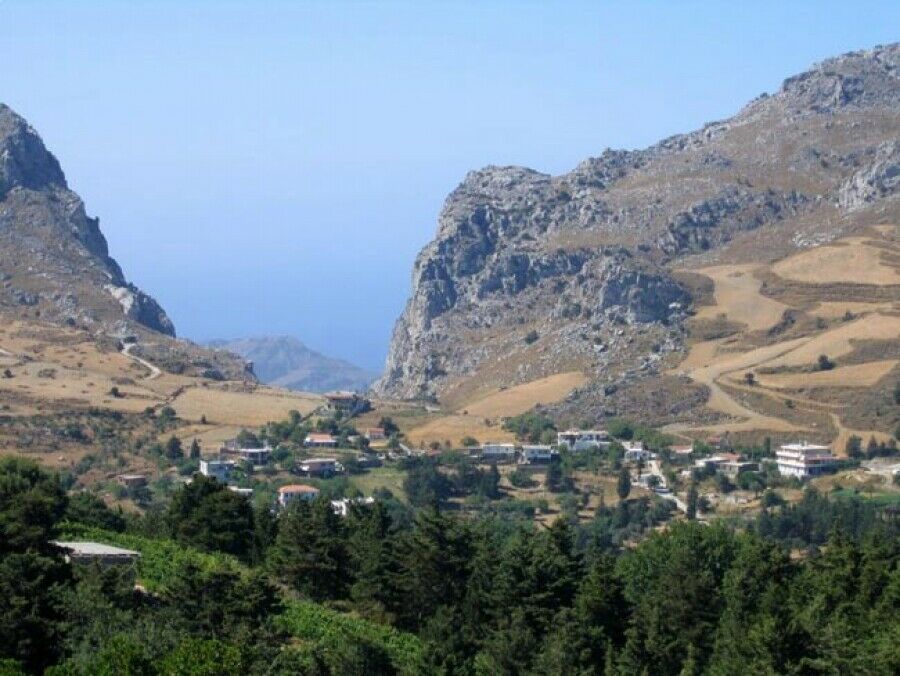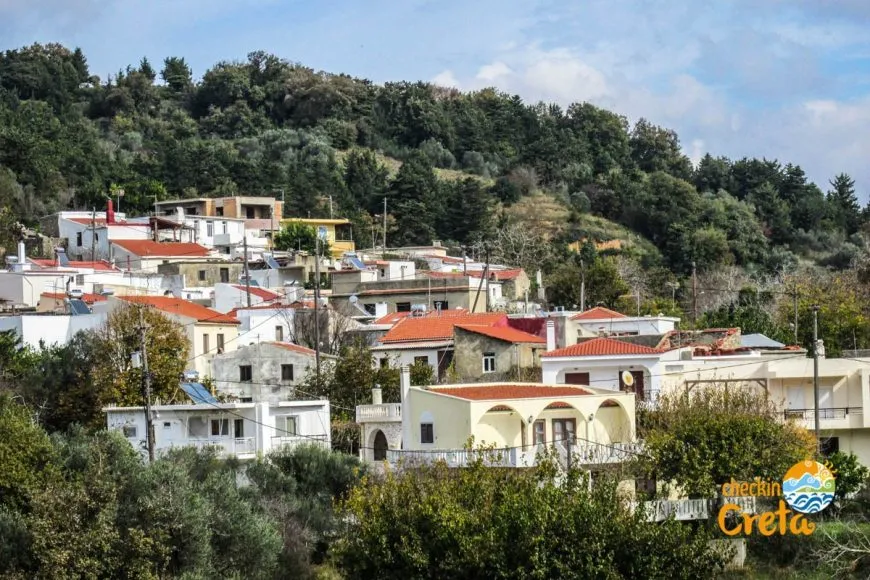"Explore Agios Ioannis, a village with a rich history and a unique origin story, where tradition intertwines with the sacred."
According to tradition, during the Byzantine or Venetian period, a shepherd girl would see a light every night in a bush. She told her fellow villagers, but they couldn't see it.
So, they set the bush on fire, but it quickly went out. In the ashes, they found a small icon of Saint John the Theologian, which had burned on the edge. They took the small icon and built their village in that area, which was named Agios Ioannis "Kamenos" (the Burned), because the icon was burnt. The icon is still preserved today as a sacred relic.
The village seems to have been founded by the union of eight settlements that were nearby, perhaps for better protection against pirates.
The Municipal Unit of Agios Ioannis includes the settlements: Agios Ioannis, Kali Sykia, Kanevos.
It has 334 residents according to the 2001 census. It is located at an altitude of 460m, found shortly after the village of Agouseliana and before the Kotifou Gorge. It is also called "Ai Giannis Kamenos" because a shepherd girl saw a bright flame emerging from a bush every night in solitude, which she showed to others, but they saw nothing. The skeptics set fire to the bush, and suddenly the fire went out, revealing a burnt small icon of Saint John the Theologian in the ashes. Astonished, they realized it was a small wooden icon that had burned in one corner. The village was named after this incident, and the region found the name Agios Vasilios.
Apart from the central part of the village, which was built around 1200 AD, there were also five other settlements: Mesonisi, Panagia, Gefyria, Kapsaliana, and Salvadou. During the major destruction of the village in 1770, even the chapel of Agios Ioannis burned down.
The famous Kyparissodasos of Agios Ioannis is noteworthy, covering an area of approximately 200 acres, consisting of 95% cypress trees and 5% oak trees. In the mountainous area of the estate of Agios Ioannis, there are vineyards cultivated organically by their owners, who have started to bottle and offer exquisite wines to the market. On the first 15 days of September, the celebration of Raki takes place in the area, specifically in the settlement of Kali Sykia. Attendees can witness the process of distillation of Raki during the festivities.


